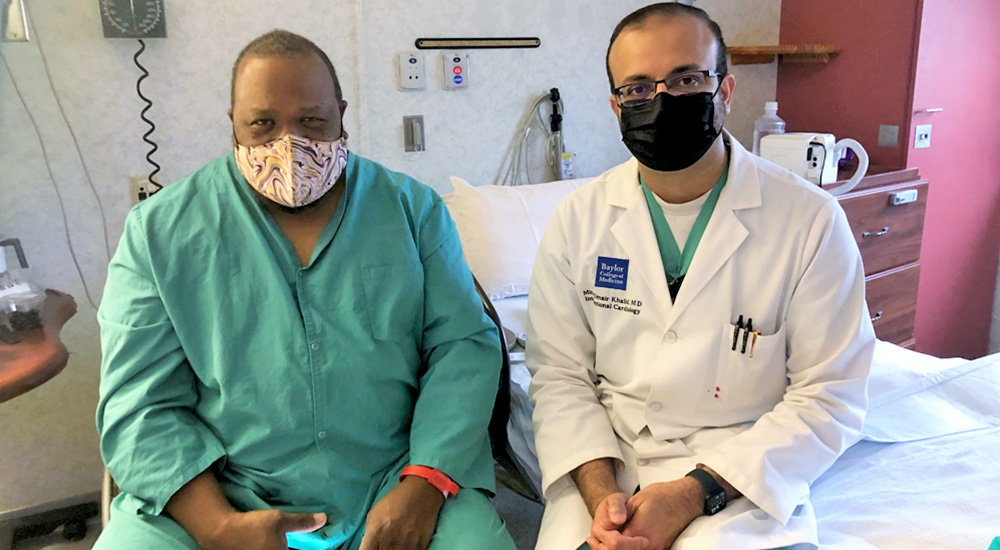The day before this year’s Super Bowl, Army Veteran Cashin Clay was walking to his car after lunch with friends. About midpoint, he felt out of breath and had pain in his chest. Not yet knowing he had a blood clot, Clay hoped a good night’s sleep would help. The 67-year-old continued home and went to bed.
The next day, Clay planned to go to a Super Bowl party but still felt unwell.
“That day, I walked around slowly and had trouble breathing,” said Clay, who served on active duty as an Army officer from 1979 to 1983 and several years in the Army Reserve. “Come Super Bowl time, my sister decided it wasn’t a good idea for me to go and might be in my best interest to go to the hospital.”
Clay checked into the emergency department at Michael E. DeBakey VA Medical Center in Houston. Tests revealed a blood clot in his lung.
Doctor performed thrombectomy procedure
“Because a blood clot obstructs blood supply to the lung, it causes a sudden shortness of breath,” said Interventional Cardiologist Dr. Mirza Khalid, a member of the Houston VA Pulmonary Embolism Response team. “If it is a large blockage, these patients can potentially have a drop in blood pressure, decreased oxygenation, strain on the heart and rhythm disturbances.”
To remove the blood clot, Khalid performed a thrombectomy procedure which involved a small cut near the groin and insertion of a catheter tube through the blood vessel.
“Once the tube is in the lung, a small funnel comes out from the tube and sucks the clot into the funnel and out of the body,” said Khalid, who is also an associate program director (academics) of the Cardiology Fellowship Program at Baylor College of Medicine. “Then we take a picture to see if any further clot is left behind so we could remove more if needed.”
While Houston VA has performed thrombectomy procedures for about the past year, Khalid used a new tool, the mechanical AlphaVac System. Recently approved by the FDA, this is an easy-to-use device designed to provide precise control in the removal of blood clots in the veins while minimizing patient blood loss.
“I salute Dr. Khalid and his phenomenal team.”
“This is a relatively newer type of therapy for pulmonary embolism,” said Khalid, pictured above with Clay. “Previously, it required major surgery to open up the chest and remove the blood clot. But now, we have new ways of removing blood clots through the blood vessel without requiring invasive surgery.”
While he may have missed the big game with his friends, Clay said he is grateful Houston VA was there for him when he needed it most.
“Dr. Khalid was very knowledgeable and professional during every step of the process,” said Clay, a retired elementary school principal. “I was initially terrified about the procedure, but it was relatively painless. I salute Dr. Khalid and his phenomenal team.”
Topics in this story
More Stories
Study underscores important role COVID vaccination can have in protecting Veterans from infection and reducing long-term health consequences
Columbia VA’s robotic surgery teams completed their 800th robotic surgery and are on schedule to hit 1,000 by the end of the year.
In a decentralized clinical trial, Veterans can participate from their own homes or local VA instead of having to travel to a research site.






